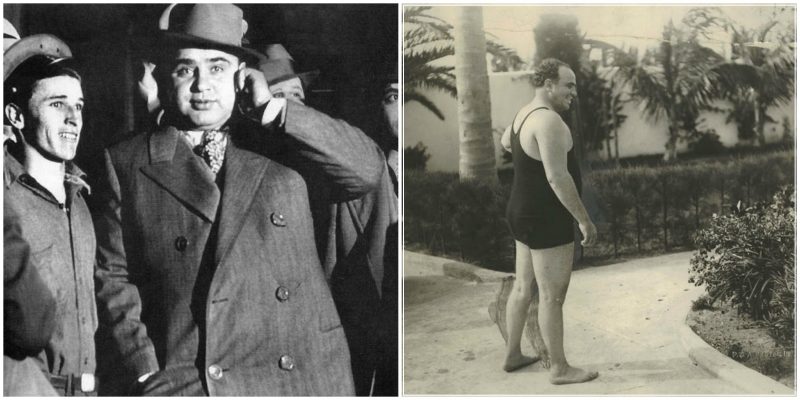“Al” Capone is the epitome of a notorious gangster, he attained fame during the Prohibition era as the co-founder and boss of the Chicago Outfit. His seven-year reign as crime boss ended when he was 33 years old.
Capone was born in the borough of Brooklyn in New York City to Italian immigrants. He was considered a Five Points Gang member who became a bouncer in organized crime premises such as brothels. In his early twenties, he moved to Chicago and became bodyguard and trusted factotum for Johnny Torrio, head of a criminal syndicate that illegally supplied alcohol – the forerunner of the Outfit – and that was politically protected through the Unione Siciliana. A conflict with the North Side Gang was instrumental in Capone’s rise and fall. Torrio went into retirement after North Side gunmen almost killed him, handing control to Capone. Capone expanded the bootlegging business through increasingly violent means, but his mutually profitable relationships with mayor William Hale Thompson and the city’s police meant that Capone seemed safe from law enforcement.
Capone apparently reveled in attention, such as the cheers from spectators when he appeared at ball games. He made donations to various charities and was viewed by many to be a “modern-day Robin Hood”. However, the Saint Valentine’s Day Massacre of gang rivals, resulting in the killing of seven men in broad daylight, damaged Chicago’s image – as well as Capone’s – leading influential citizens to demand governmental action and newspapers to dub him “Public Enemy No. 1”.
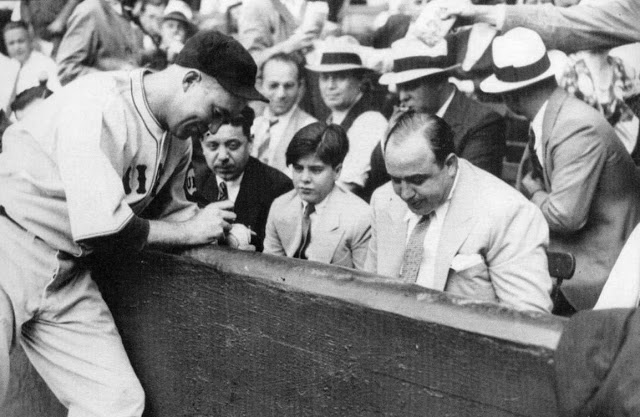
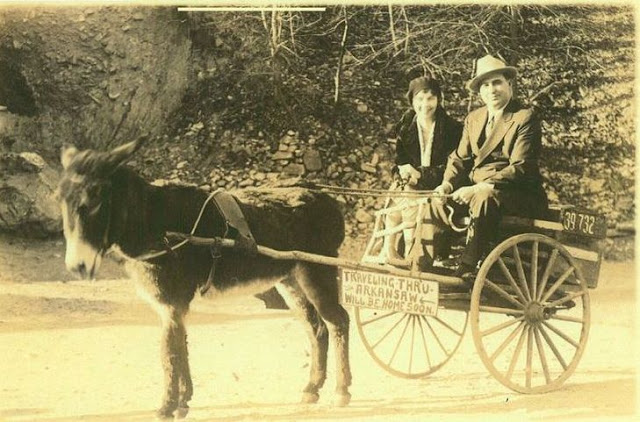
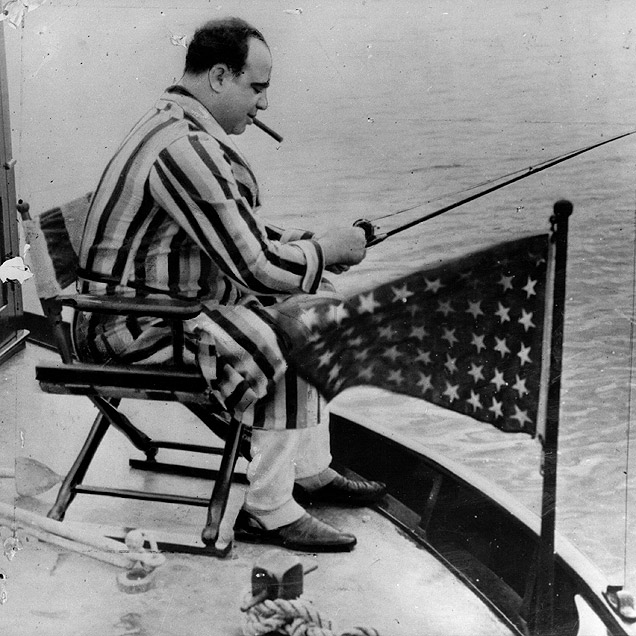
Capone initially became involved with small-time gangs that included the Junior Forty Thieves and the Bowery Boys. He then joined the Brooklyn Rippers, and then the powerfulFive Points Gang based in Lower Manhattan. During this time, he was employed and mentored by fellow racketeer Frankie Yale, a bartender in a Coney Island dance hall and saloon called the Harvard Inn. Capone inadvertently insulted a woman while working the door at a Brooklyn night club and was slashed by her brother Frank Gallucio. The wounds led to the nickname that Capone loathed: “Scarface”.Yale insisted that Capone apologize to Gallucio, and later Capone hired him as a bodyguard. When photographed, Capone hid the scarred left side of his face, saying that the injuries were war wounds. Capone was called “Snorky,” a term for a sharp dresser, by his closest friends
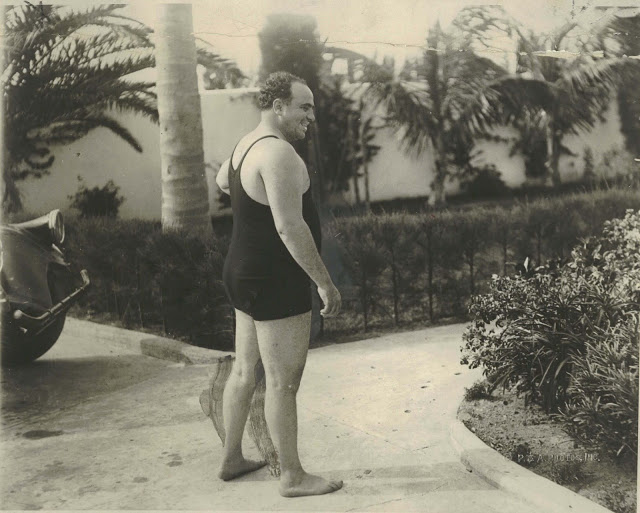
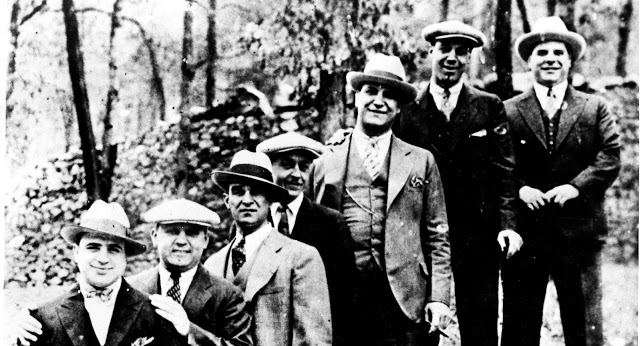
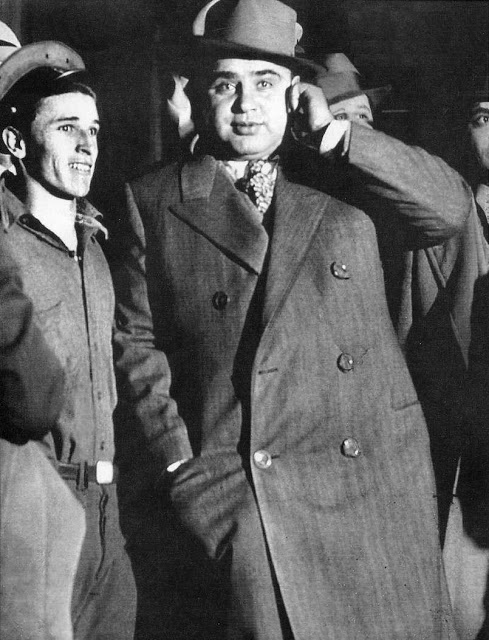
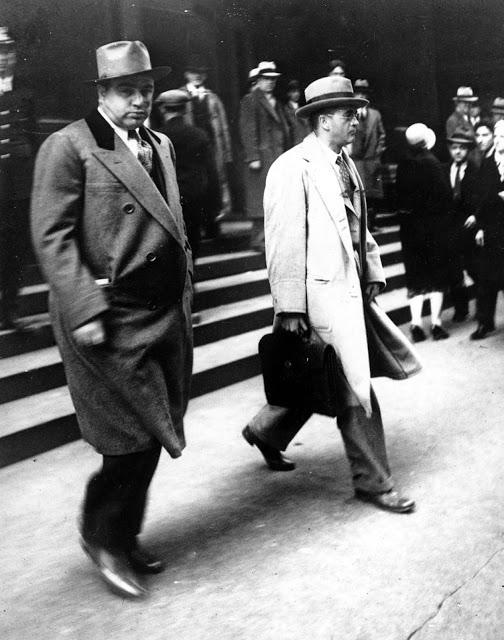
At about 20 years of age, Capone left New York for Chicago at the invitation of Johnny Torrio, who was imported by bootlegger James “Big Jim” Colosimo as an enforcer. Capone began in Chicago as a bouncer in a brothel, where he contracted syphilis. Timely use of Salvarsan probably could have cured the infection, but he apparently never sought treatmentIn 1923, he purchased a small house at 7244 South Prairie Avenue in the Park Manor neighborhood on the city’s south side for US$5,500. In the early years of the decade, Capone’s name began appearing in newspaper sports pages, where he was described as a boxing promoter. Chicago’s location on Lake Michigan gave access to a vast inland territory, and it was well-served by railroads. Torrio took over Colosimo’s crime empire after Colosimo’s murder on May 11, 1920, in which Capone was suspected of being involved.
Torrio headed an essentially Italian organized crime group that was the biggest in the city, with Capone as his right-hand man. He was wary of being drawn into gang wars and tried to negotiate agreements over territory between rival crime groups. The smaller, mixed ethnicity, North Side Gang led by Dean O’Banion (also known as Dion O’Banion) came under pressure from the Genna brothers, who were allied with Torrio. O’Banion found that, for all Torrio’s pretensions to be a settler of disputes, he was unhelpful with the encroachment of the Gennas into the North Side.In a fateful step, Torrio either arranged for or acquiesced to the murder of O’Banion at the latter’s flower shop in October 1924. This placed Hymie Weiss at the head of the gang, backed by Vincent Drucci and Bugs Moran. Weiss had been a close friend of O’Banion, and the North Siders treated revenge on his killers as a priority.
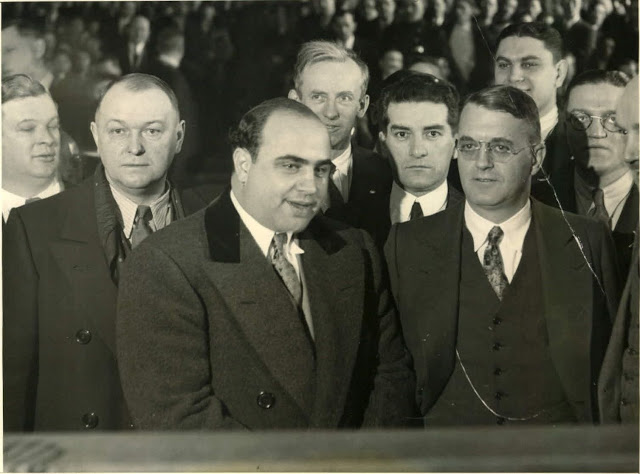
In January 1925, Capone was ambushed, leaving him shaken but unhurt. Twelve days later, Torrio was returning from a shopping trip when he was shot several times. After recovering, Torrio effectively resigned and handed control to Capone, age 26, who became the new boss of an organization that took in illegal breweries and a transportation network that reached to Canada, with political and law-enforcement protection. In turn, he was able to use more violence to increase revenue. Refusal by an establishment to purchase liquor from him often resulted in the premises being blown up. As many as 100 people were killed in such bombings during the 1920s. Rivals saw Capone as responsible for the proliferation of brothels in the city
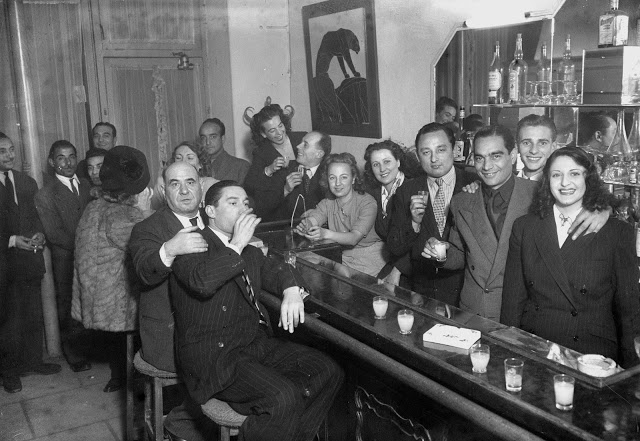
Capone indulged in custom suits, cigars, gourmet food and drink (his preferred liquor was Templeton Rye from Iowa, and female companionship. He was particularly known for his flamboyant and costly jewelry. His favorite responses to questions about his activities were: “I am just a businessman, giving the people what they want”; and, “All I do is satisfy a public demand.” Capone had become a national celebrity and talking point
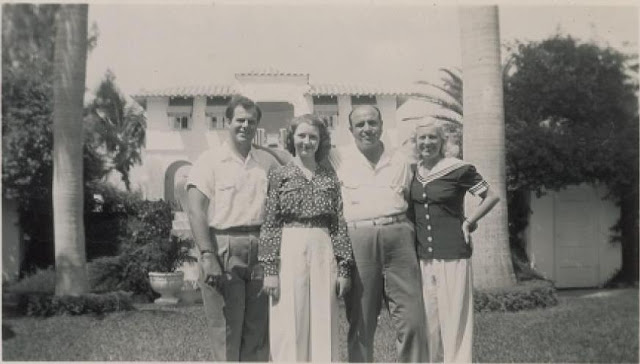
Capone based himself in Cicero after using bribery and widespread intimidation to take over during elections for the town council. This made it difficult for the North Siders to target him.Capone’s driver was found tortured and murdered, and there was an attempt on Weiss’s life in the Chicago Loop. On September 20, 1926, the North Side Gang used a ploy outside the Capone headquarters at the Hawthorne Inn, aimed at drawing him to the windows. Gunmen in several cars then opened fire with Thompson submachine guns and shotguns at the windows of the first-floor restaurant. Capone was unhurt and called for a truce, but the negotiations fell through. Three weeks later, Weiss was killed outside the former O’Banion flower shop North Side headquarters. In January 1927, the Hawthorne’s restaurant owner, a friend of Capone’s, was kidnapped and killed by Moran and Drucci
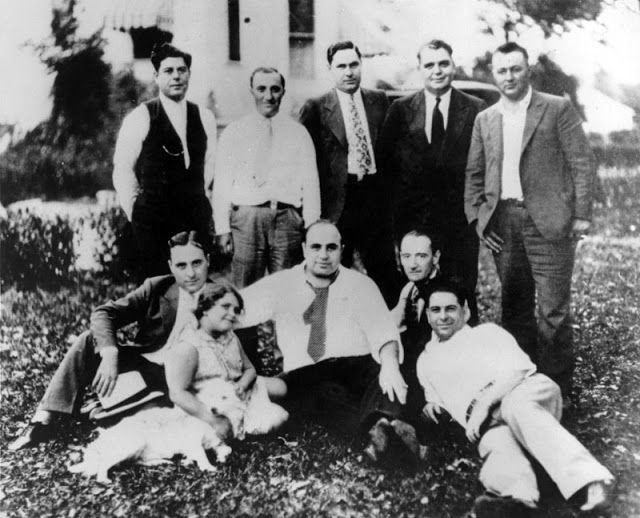
Capone was widely assumed to have been responsible for ordering the 1929 Saint Valentine’s Day Massacre in an attempt to kill Bugs Moran, the head of the North Side Gang. Moran was the last survivor of the main North Side gunmen; his succession had come about because his similarly aggressive predecessors Vincent Drucci and Hymie Weiss had been killed in the violence that followed the murder of original leader Dean O’Banion.
To monitor their targets’ habits and movements, Capone’s men rented an apartment across from the trucking warehouse and garage at 2122 North Clark Street that served as Moran headquarters. On the morning of Thursday, February 14, 1929, Capone’s lookouts signaled gunmen disguised as police to start a “raid.” The faux police lined the seven victims along a wall without a struggle, then signaled for accomplices with machine guns. The seven victims were machine-gunned and shot-gunned. Photos of the victims shocked the public and damaged Capone’s reputation. Within days, Capone received a summons to testify before a Chicago grand jury on violations of the federal Prohibition Law, but he claimed to be too unwell to attend at that time
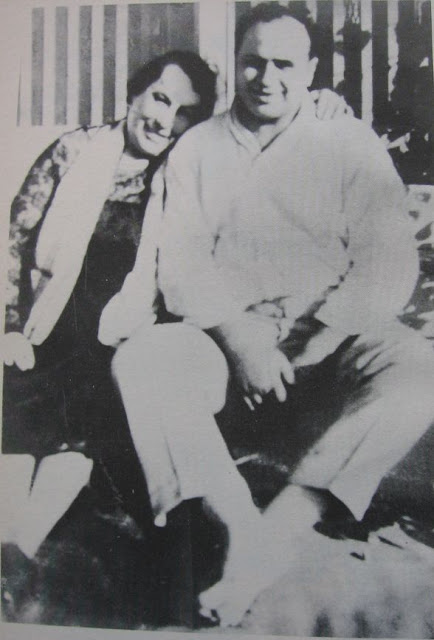
Capone was arrested by FBI agents on March 27, 1929 as he left a Chicago courtroom after testifying to a grand jury investigating violations of federal prohibition laws, on charges of having committed contempt of court by feigning illness to avoid an earlier appearance. In May 1929, Capone was sentenced to a prison term in Philadelphia’s Eastern State Penitentiary, having been convicted within 16 hours of being arrested for carrying a gun during a trip there. A week after he was released, in March 1930, Capone was listed as the number one “Public Enemy” on the unofficial Chicago Crime Commission’s widely publicized list.
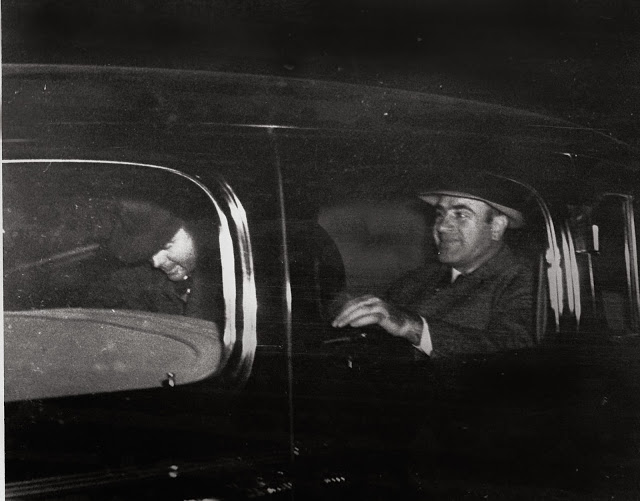
In April 1930, Capone was arrested on vagrancy charges when visiting Miami Beach, the governor having ordered sheriffs to run him out of the state. Capone claimed that Miami police had refused him food and water and threatened to arrest his family. He was charged with perjury for making these statements, but was acquitted after a three-day trial in July.In September, a Chicago judge issued a warrant for Capone on charges of vagrancy, and then used the publicity to run against Thompson in the Republican primary.In February 1931, Capone was tried on the contempt of court charge. In court, Judge James Herbert Wilkerson intervened to reinforce questioning of Capone’s doctor by the prosecutor. Wilkerson sentenced Capone to six months, but he remained free while on appeal of the contempt conviction
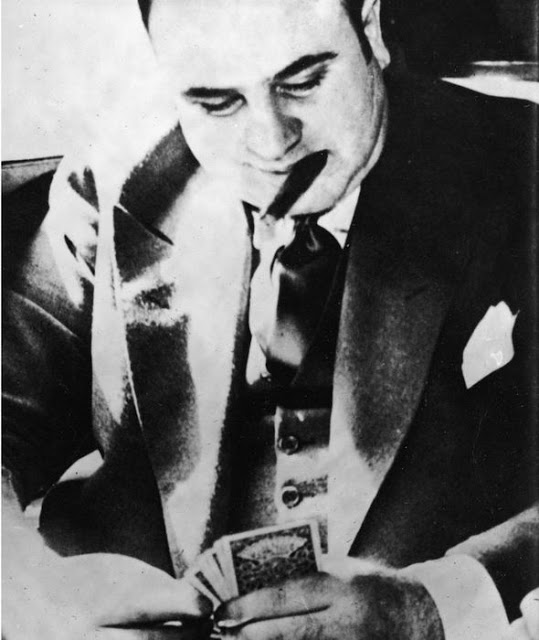
Capone was sent to Atlanta U.S. Penitentiary in May 1932, aged 33. Upon his arrival at Atlanta, the 250-pound (110 kg) Capone was officially diagnosed with syphilis and gonorrhea. He was also suffering from withdrawal symptoms from cocaine addiction, use of which had perforated his septum. Capone was competent at his prison job of stitching soles on shoes for eight hours a day, but his letters were barely coherent. He was seen as a weak personality, and so out of his depth dealing with bullying fellow inmates that his cellmate, seasoned convict Red Rudinsky, feared that Capone would have a breakdown. Rudinsky was formerly a small time criminal associated with the Capone gang, and found himself becoming a protector for Capone.
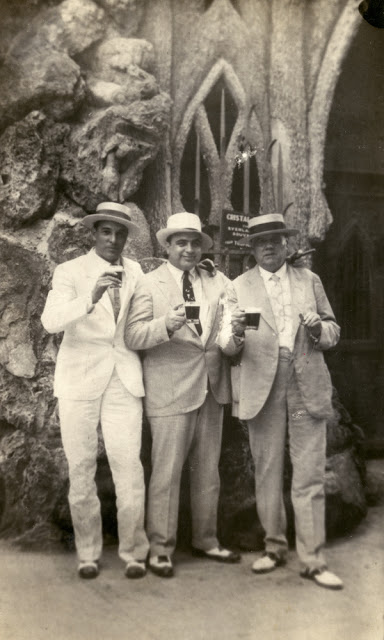
After Capone was released from prison, he was referred to Johns Hopkins Hospital in Baltimore for the treatment of paresis (caused by late-stage syphilis). Hopkins refused to admit him based solely on his reputation, butUnion Memorial Hospital took him in. Capone was grateful for the compassionate care that he received, and donated two Japanese weeping cherry trees to Union Memorial Hospital in 1939. A very sickly Capone left Baltimore on March 20, 1940, after a few weeks inpatient and a few weeks outpatient, for Palm Island, Florida.
In 1946, his physician and a Baltimore psychiatrist performed examinations and concluded that Capone had the mental capability of a 12-year-old child.Capone spent the last years of his life at his mansion in Palm Island, Florida.On January 21, 1947, Capone had a stroke. He regained consciousness and started to improve but contracted pneumonia. He suffered a fatal cardiac arrest the next day. On January 25, 1947, Al Capone died in his home, surrounded by his family;he wаs buried аt Mount Carmel Cemetery in Hillside, Illinois.
